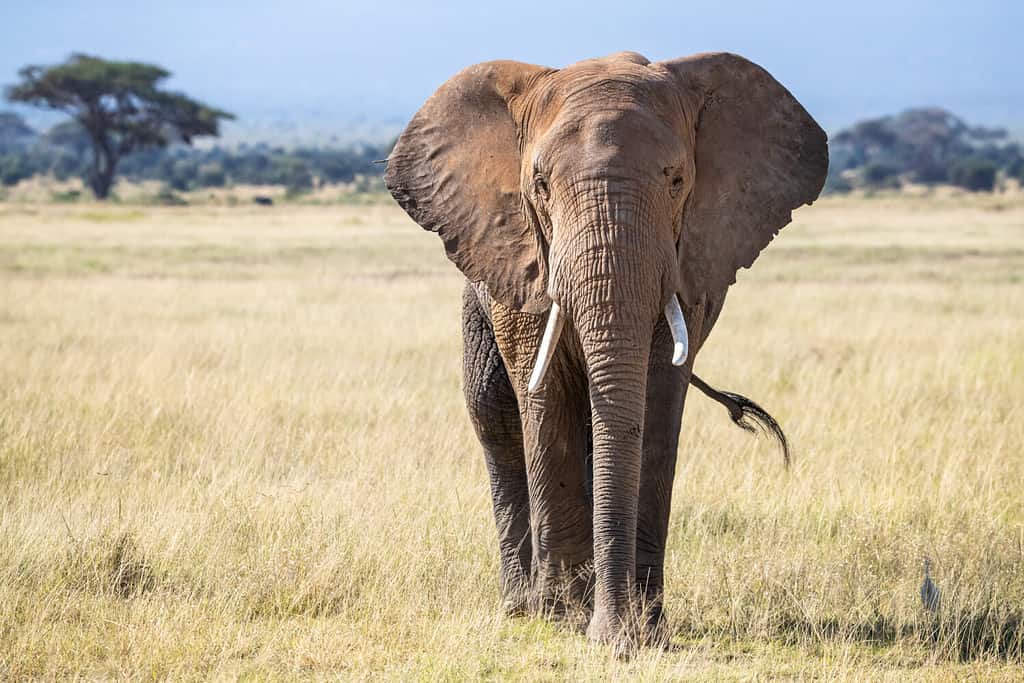There’s an obstruction on the road in Kruger National Park in Africa and nobody in their right mind is going to step in to remove it! The holdup is caused by two elephant bulls having a confrontation. With a mixture of head charging and posturing, each of the elephants tries to assert his dominance over the other. The motorists have very different approaches to dealing with this. One reverses completely out of the way. Another tries to edge forward and get past the battling elephants. A third stops to record this video so that we can all share the moment. Scroll down to see the full extraordinary confrontation.
Are Bull Elephants Normally Aggressive?
Most interactions between bull elephants are fairly low-key. It is unusual for them to be very aggressive towards each other. Most of what we can see here is posturing. The aggressor elephant will turn towards their enemy and spread their ears. At the same time, they stand as tall as possible because they want to make themselves look larger than their opponent. Posturing also involves head nodding, shaking, and jerking. Finally, a forward swish of the trunk is also an offensive behavior.
When elephants do come to blows, it involves wrestling with trunks, pushing each other with their heads (as we can see in this clip), and clashing tusks.

African bull elephants can clash over mating rights.
©Jane Rix/Shutterstock.com
Why Do Male Elephants Fight?
Male elephants fight for mating rights with a female. The female will mate with the most dominant male.
Male elephants go through a condition called musth. During this time, they experience a huge increase in testosterone – it can reach six times normal levels. It makes the male elephant feel restless and aggressive and their behavior can become more unpredictable.
At the same time, they often lose their appetite and it is not unusual for them to shed 1000 pounds. This stage usually lasts between two and three months. You can tell that a male is in musth because there will be a thick tar-like secretion discharging from ducts on the side of their head.
We don’t know if the elephants in this clip are in musth or if this is a milder tussle. Either way, it seems sensible to stay out of the way until they have resolved it and moved on!
Watch the Incredible Clip Below
The photo featured at the top of this post is © iStock.com/AndreAnita
Thank you for reading! Have some feedback for us? Contact the AZ Animals editorial team.







